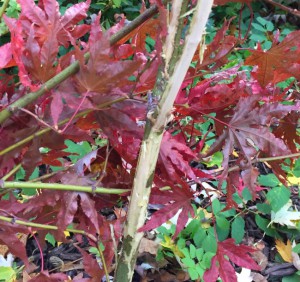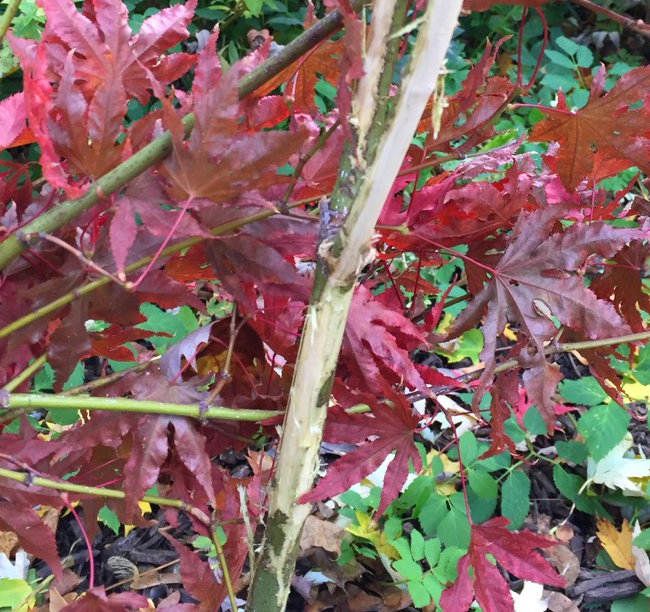Throughout the cold winter months, critters will be on the hunt for food. With snow making foraging difficult, they may resort to nibbling things other than fallen seeds and nuts- namely the bark on your Japanese maple trees. On top of that, squirrels have a nasty habit of snapping off small branches to mark their territory—which can be quite devastating to young maples under 5 years old.
Once critters have munched on your Japanese maple’s bark—or ripped off branches—nothing can be done cosmetically to hide the scar. As time goes on, the tree will heal itself if the damage isn’t too severe, and once your maple reaches maturity, it will hardly be noticeable.
If you don’t want your newly planted Japanese maple trees to get a serious pruning by your furry neighbors, remember to use a combination of granular animal repellents and sprays. I like using Bobbex which lasts about 3 months (even through heavy rains), or Ortho® Animal B Gon® every 30 days from October thru December, and then again from March thru May. It’s a good idea to change up brands once in a while so animals don’t get used to the same ones.
Most people mistakenly blame critter damage on mice, but they aren’t the culprits. The real offenders are voles. They are a stronger critter than a mouse and very destructive. Voles have a shorter body, shorter tail, coarse hair, and small eyes. Rather cute! Bait for mice or rats won’t work on voles. You need a bait that is specific for voles or includes them on the list. I use Kaput mouse and vole bait.
Also, try to keep leaves and weeds away from the base of your Japanese maples so animals can’t tunnel or hide while eating your trees. Use tree guards to keep woodchucks, squirrels or other bark-eating critters from doing damage. You can even wrap burlap around the trunk of your Japanese maples to keep critters away.




